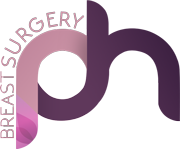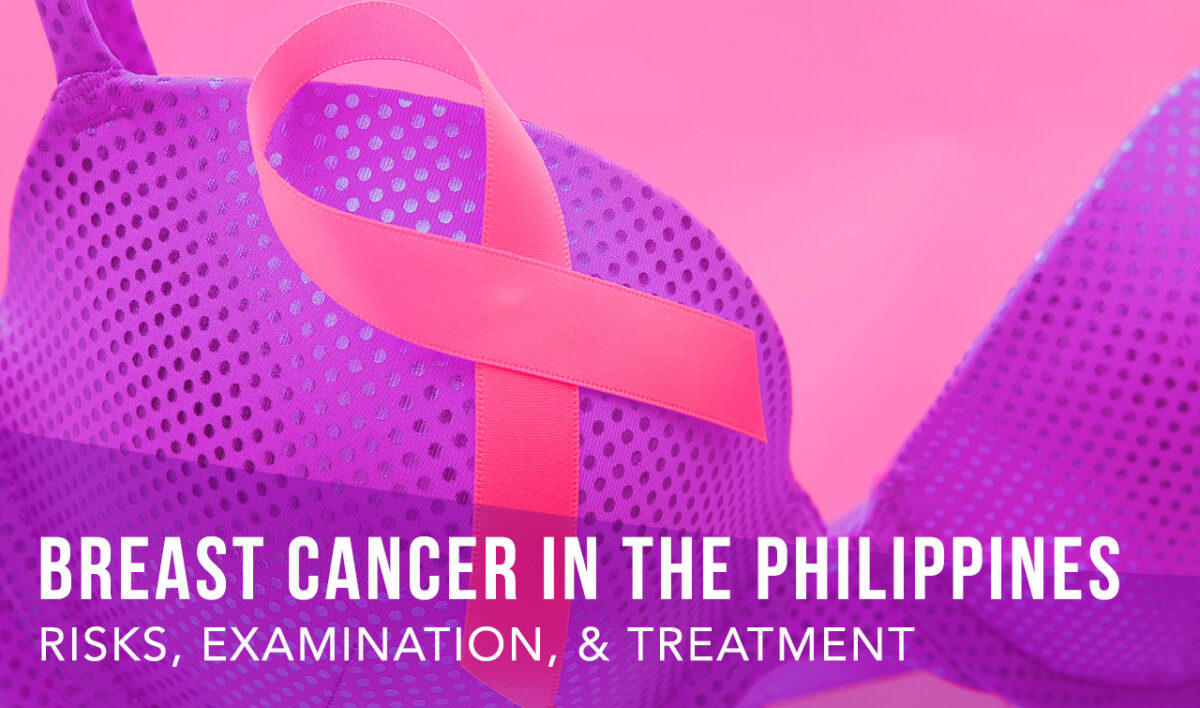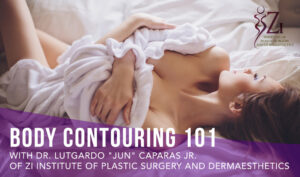Breast cancer in the Philippines is still the most common cancer affecting women. In 2020, there were 86,484 new cases of breast cancer among women in the Philippines. Locally, the 10-year survival rate among Filipino breast cancer patients is estimated to be only 57%, much lower than in other developed countries. According to the International Agency for Research on Cancer, the Philippines has the highest prevalence of breast cancer in Southeast Asia.
This is true even in other parts of the world. According to the World Health Organization (WHO), there were 19.3 million people diagnosed with cancer in 2020. The number of people who died because of the disease also increased to 10 million in the same year. Breast cancer cases are higher in more developed countries; however, the number of women diagnosed with the disease is increasing in every region of the world.
RISK FACTORS FOR BREAST CANCER
There are no known causes of breast cancer in the Philippines. However, several risk factors could increase the possibility of developing the condition. Some of the risk factors are controllable, while others are uncontrollable.
Some of the risk factors that women do not have control over are the following:
- Age
The risk of breast cancer increases as a person ages. 1 out of 8 invasive breast cancer cases develops in women younger than 45 years old. While 2 out of 3 invasive cancer cases develop in women 55 or older.
- Family History
About 5% to 10% of breast cancers are considered hereditary. If a woman has a close family member diagnosed with breast cancer, she has a higher risk of developing cancer as well. If a first-degree female relative (sister, mother, daughter) is diagnosed with the condition, there is a double risk of developing it as well. If two first-degree relatives have been diagnosed, the risk of having cancer is five times higher.
- History of Breast Cancer
If a woman has been diagnosed with breast cancer, she has a 3 to 4 times higher risk of developing cancer in the breast previously not affected or a different part of the same breast.
- Radiation Therapy
Undergoing radiation treatment in the chest and face area increases the risk of having breast cancer. Patients who had radiation therapy in the chest area, for other types of cancer such as Hodgkin disease or non-Hodgkin lymphoma, may be at higher risk of developing breast cancer. People who had radiation therapy to treat acne during their adolescence may also be at higher risk of developing the condition later on. However, the level of risk depends on the age when the individual had radiation treatment. The highest is during adolescence when a woman’s breasts are developing.
- Exposure to Estrogen
Estrogen stimulates the growth of breast cells. Heightened levels of estrogen over long periods of time may increase the risk of having breast cancer. This is also the reason why women who started having menstruation early (before age 12) or went through menopause late (after age 55) have a higher risk of breast cancer.
Some of the risk factors that women have control over are the following:
- Weight and Diet
Overweight and obese women have a higher risk of having breast cancer. Weight is a more crucial factor after menopause. Fat tissue is the body’s main source of estrogen after menopause. Extra fat cells can lead to excess levels of estrogen, which could lead to breast cancer. What a person eats also affects the risk of developing cancer. A person’s diet causes 30% to 40% of all cancers. Breast cancer is less common in countries where a plant-based and low-fat diet is normal. Also, women who have a high-fat diet during puberty have a higher risk of breast cancer.
- Alcohol and Cigarettes
Alcohol and cigarette smoking can lead to a higher risk of breast cancer. This is because they affect estrogen levels, which could lead to breast cancer.
- Pregnancy over 30 years old
Women who have not had a full-term pregnancy or their first child after 30 years old have a higher risk of breast cancer. When breast cells develop during puberty, they are considered immature and active, before a woman’s first full-term pregnancy. Immature breast cells respond better to estrogen levels. After the first full-term, breast cells become more mature; thus less likely to respond to estrogen. Research also shows that breastfeeding decreases the risk of breast cancer, especially for those who did it for longer than a year.
BREAST CANCER PREVENTION
While there might not be a known cause of breast cancer in the Philippines, there are still ways to decrease its risk factors. According to research, a change to a healthier lifestyle places women at a lower risk of breast cancer. Here are the things that could be done as prevention:
- Limit alcohol intake
- Stop smoking
- Maintain a healthy weight
- Engage in physical activities
- Breastfeed (for mothers)
SELF-EXAMINATION FOR BREAST CANCER
According to the Philippine Cancer Society Inc. (PCSI), most Filipino patients start to consult a doctor late, commonly during the advanced stages of cancer. So, they encourage everyone to have an annual clinical breast exam and mammography. Another thing they are promoting is Breast Self-Examination (BSE). Here are the three ways to do self-examination according to the PCSI:
- In the shower or while having a bath
Hands glide easily over wet skin. Lay your finger flatly and move it gently around every part of the breast. Use the right hand to examine the left breast and vice versa. Check for a lump, hard knot, or any thickening part.
- In front of a mirror
Inspect the breast while having the arms at the side. Then, raise the arms overhead. Look for changes in the breast, such as swelling, dimpling of the skin, or any change in the nipples. After that, rest the palms on the hips and press down to the chest muscles. The left and right breast will not exactly match, which is normal.
- Lying down
When checking the right breast, put a pillow under the right shoulder and place the right hand under the head. With the left hand, lay the fingers flat on the top outermost part of the breast. Then, make small circular motions around the outer area of the breast. After that, move an inch toward the nipples and repeat the procedure. Do it three more times until reaching the nipple. Finally, squeeze the nipple gently between the thumb and index finger. Do the same step for the left breast.
Self-examining does not only check for lumps in the breast. Check for other indicators, such as dimpling of the skin, change in texture or temperature of the breast, itching or burning sensation, and unusual discharge in the nipple that may be clear or another color, or bloody. Doctors recommend self-examination to be done once a month, around 3 to 5 days after the menstruation starts because the breasts are not as tender or lumpy during this time. Upon noticing any changes in the breast, consult a doctor immediately.
TREATMENT FOR BREAST CANCER
Breast cancer can be invasive or noninvasive. Invasive breast cancer means that cancer cells have spread to the surrounding tissue. If cancer cells have remained in the breast duct or lobule and have not spread to the surrounding breast tissue, it is considered noninvasive.
Different treatments address the two. Treatments that remove or destroy cancer cells within the tissue, or nearby tissues like the lymph nodes, include:
- Mastectomy or Lumpectomy
With a mastectomy, the entire breast, all breast tissue, and sometimes the surrounding tissue is removed. Lumpectomy, on the other hand, only removes the tumor and tissues around it.
- Radiation Therapy
Radiation therapy uses high-energy rays, which kills off cancer cells. A patient can have one type of radiation therapy, or a mixture of different types, depending on the condition of cancer.
Treatments that destroy or control cancer cells that have spread through other parts of the body include:
- Chemotherapy
Chemotherapy uses drugs to kill cancer cells. The drugs are either taken orally or injected. It then travels through the bloodstream to the parts of the body affected by cancer.
- Hormone Therapy
Hormone therapy uses drugs that stop hormones, especially estrogen, to develop breast cancer cells.
- Targeted Therapy
Targeted therapy uses drugs that allow the immune system to fight off cancer cells. Targeted therapy might differ depending on the condition of cancer and where it has spread in the body.
There are many options for the treatment of breast cancer in the Philippines. Many local surgeons are trained and experienced when it comes to treating the condition. However, a common concern that breast cancer patients have is the look of their breasts after treatment, especially in surgeries like a mastectomy.
Though there is nothing to worry about. Many surgeons perform breast reconstructive surgery for patients that undergo a mastectomy. It will also help you find the perfect breast implants for your breast reconstructive surgery. Breast Surgery Philippines recommends Motiva Breast Implants. With years of clinical studies and experimentation, Motiva Breast Implants assures a safe medical experience. To know more about Motiva Breast Implant, you may visit the BSPH website.





